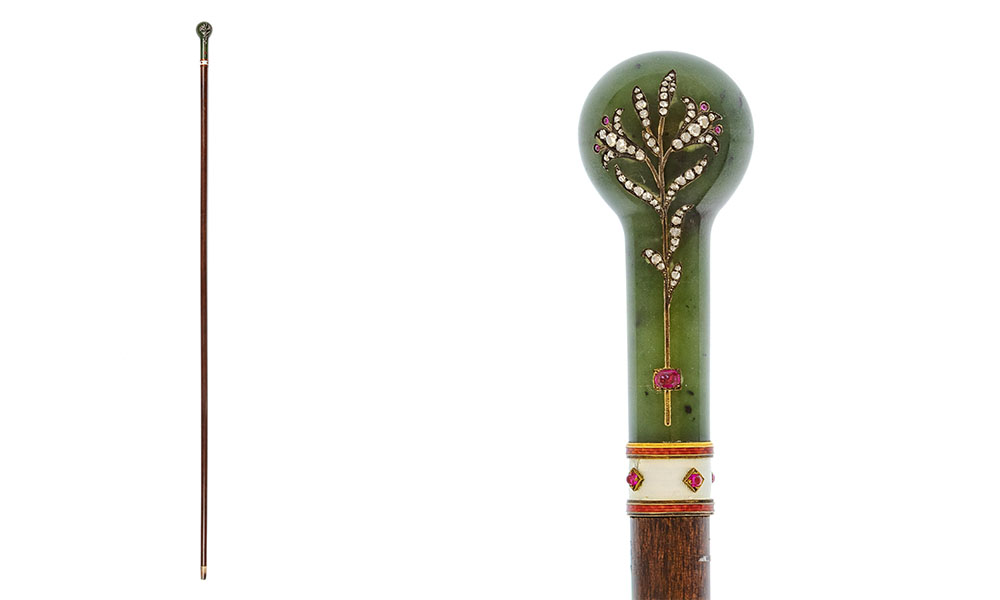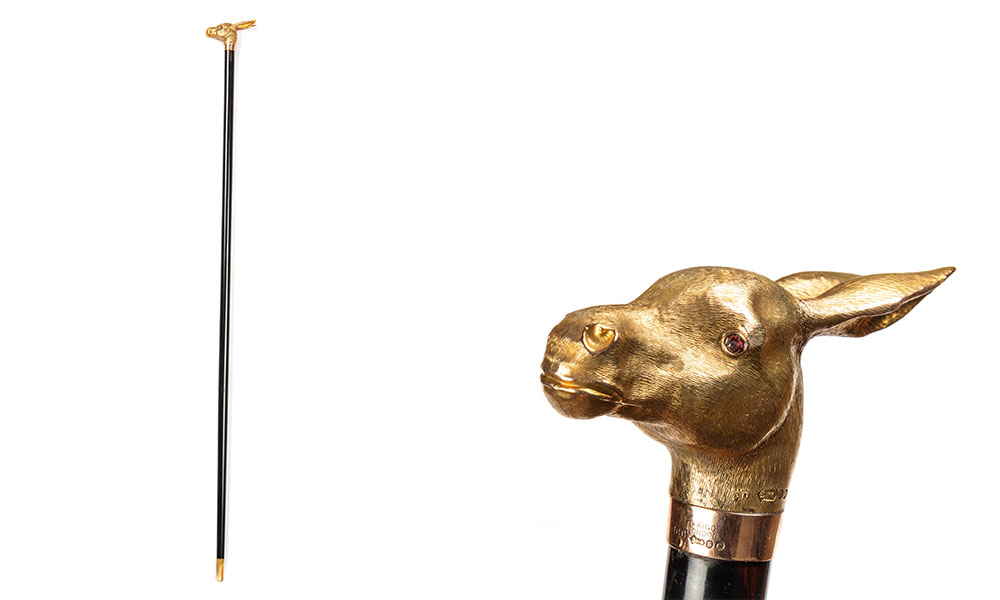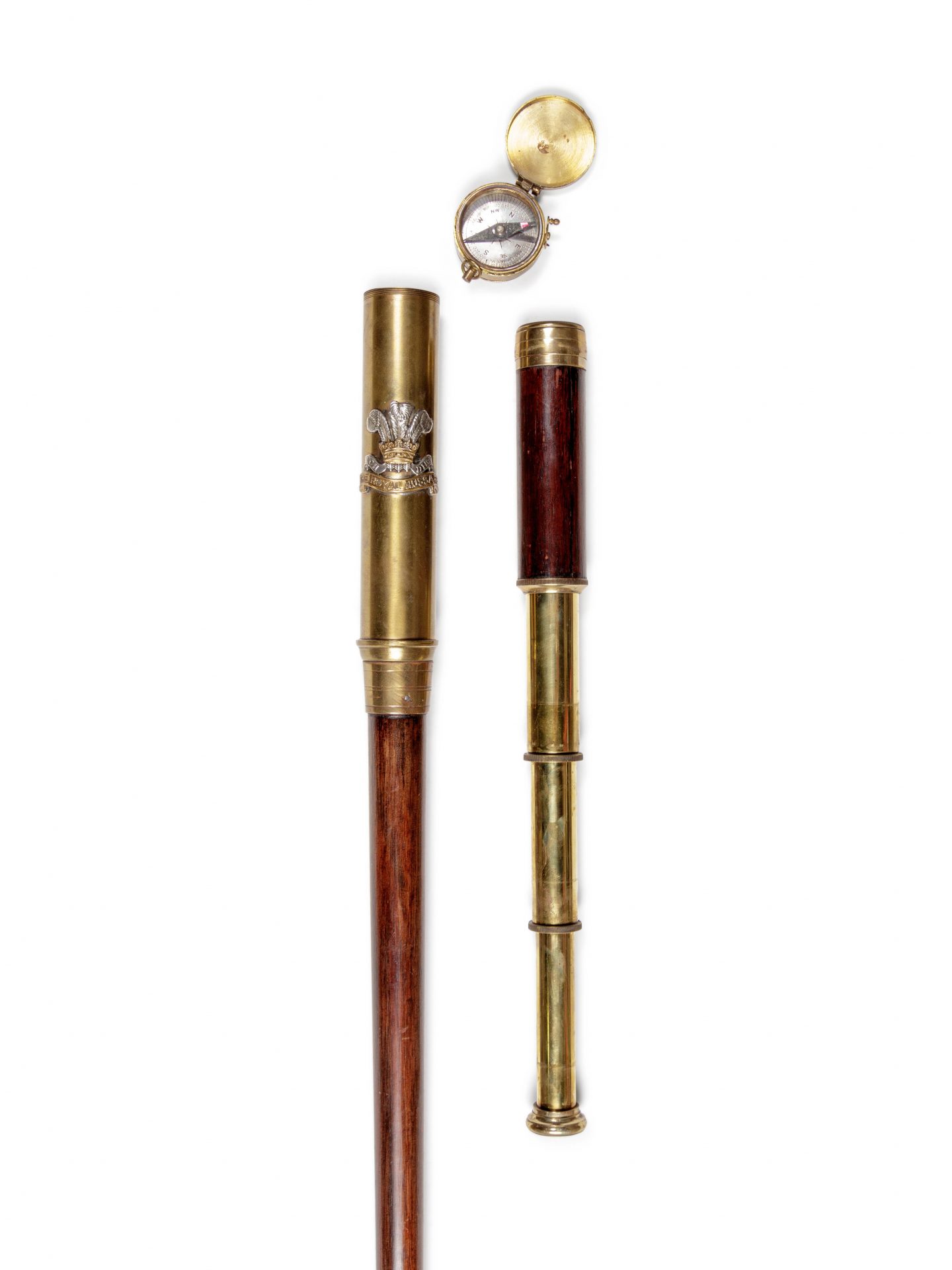Fine Canes and Walking Sticks
Walking sticks have been around for thousands of years. The earliest examples were used for the purpose of aiding someone on a long journey or in defending themselves from potential thieves along their journey. In the early 17th century, it became fashionable for men to carry them and rules of etiquette were meant to be followed if you were to carry one. In fact, by the early 18th Century, the city of London required special licensing in order to carry one. If you did not follow the rules, you could lose your privilege to carry.

A Continental Diamond and Ruby-Inset Nephrite Handled Walking Stick
At first glance, this stick is one of simple and elegant form, but upon closer inspection it reveals beautiful gems delicately inlaid into the knob-form nephrite jade handle. With diamonds and rubies, the maker paid careful attention to create the lovely floral decoration. Additionally, the white enameled band collar has been intricately engine-turned and further set with precious stones. The presence of nephrite jade, and the quality of the enamel work, suggest that this stick was likely manufactured in Russia during the late 19th Century. -$3000/5000

An Edwardian 12-Karat Gold Zoomorphic Walking Stick
This impressive example of a zoomorphic walking stick shows a long-eared donkey with eyes inlaid with a red paste, closely resembling rubies. The makers, Charles Dimier and Charles Cook of London, paid close attention to detail, capturing the texture of the animal’s hair. This type of zoomorphic handle was commonly made by prominent jewelers in the late 19th and early 20th centuries, and they were overwhelmingly popular. Other zoomorphic figures included in this sale are an example of a dog, a fish and a frog. – $2000/3000

Four Decorative Walking Sticks
This lovely group of canes shows the attention to detail given to the metal-worked handles of canes from the late 19th/early 20th Centuries. While beautiful from the outside, two of the examples in this group conceal an element oft desired by cane collectors throughout the world. Blades have been attached to the fish form example and the long tapered, silvered metal example. Estimate – $800-1200

A British Silvered Metal Mounted Brass ‘Royal Hussars’ Explorer’s Walking Stick
The 10th Royal Hussars (aka Prince of Wales’ Own) was a British Army cavalry regiment that was formed in the early 18th Century (circa 1715). They aided the military in numerous wars including the Napoleonic War and the two World Wars. This walking stick bearing the insignia of this illustrious group also conceals a couple of important tools for any avid explorer. The top of the cane handle is a compass, which when removed from the top of the cane, reveals a concealed telescope tucked away in the upper section of the stick’s shaft. There are a number of similar “Explorer’s” sticks in this sale featuring similar tools and others concealing doctor’s tools, dental tools and more. Estimate – $600/800

An English Silver-Plate Mounted and Ebonized Masonic Orb System Walking Stick
Masonic orbs are thought to have had their origins as a pocket watch fob. A number of other examples that have been converted to be the handle of a cane have come up at auction before. Each orb is made of six triangles that fold into one another. Each face of the triangles shows a different masonic symbol. When the triangles are fully folded out of the orb they present a cross. Some theories as to the origin of the orb is that it was made to illustrate the interior of the masonic temple, showing where members of status could be found. This lovely example has a beautifully engraved exterior showing intricate scrollwork. – $600/800

This simple walking stick bears a small medallion on the top of its handle depicting a triumphant Eiffel Tower and inscribed LIBERATION / 1944 / WELCOME / PARIS 24 AOUT. Additionally, the handle pulls up and reveals a small, rolled American flag to be waved in the air in celebration of this great victory for the Allied powers at the end of World War II. Estimate – $100-200